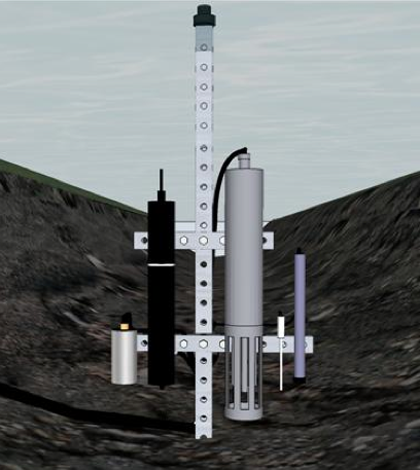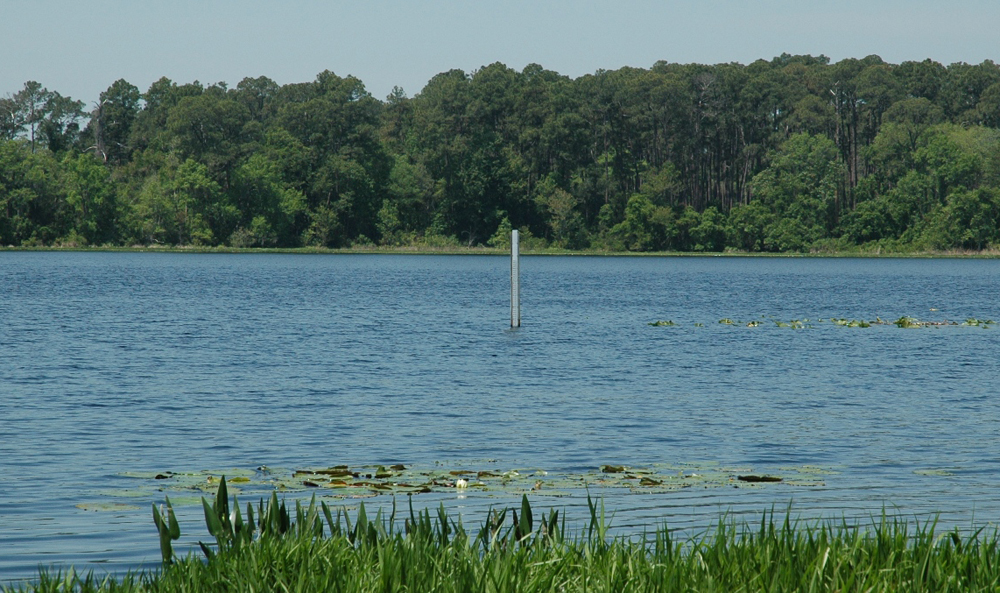National Ecological Observatory Network develops aquatic sensor stations across U.S.

The sensors in any environmental monitoring system have to be tough enough to withstand the environments that they’re monitoring. But the scientists at the National Ecological Observatory Network have their work cut out for them.
This 30-year, 100-site monitoring effort has to design sensor infrastructure that can withstand droughts and floods, ice cover and fires, and the occasional grazing cow.
“Several of the sites that we’re based at are working farms,” said Charlotte Roehm, a senior scientist with NEON. “So we have to take into account effects of animal foraging and similar challenges in those areas.”
NEON aspires to monitor ecological change in a diversity of terrestrial and aquatic systems across the U.S. Funded by the National Science Foundation, the program plans to collect 30 years of data to help investigate environmental effects of issues like climate change, land use and invasive species.They’ll collect data at more than 100 sites through both long-term sensor stations and field sampling initiatives.
Sensors at 36 of those sites will be installed in a mix of lakes and streams from Puerto Rico to Alaska.
“We received our construction funds last year, so we’ve only just started constructing this year,” Roehm said. “We’re planning on having two sites coming up in the next six months for installation into operation.”
Though NEON is still in its early stages of observation and installation, the program’s working groups have been busy planning and designing the infrastructure that will support the suite of off-the-shelf sensors they’ll be installing at each site.
One challenge they face is designing sensor mounts that will allow the instruments to collect standardized measurements in wildly different landscapes across the continent, Roehm said. They need to install sensors in high alpine streams in Colorado in such a way that it won’t bias data when compared with, say, the sensors in Alaskan systems that have only a few months of ice free water each year.

A staff gauge on Florida’s Barco Lake, a future NEON aquatic site (Credit: Charlotte Roehm)
They’ll also be also working in streams that occasionally dry out, which can disrupt some sensors. They’re experimenting with flow-through cell techniques to offset that.
And in a flashy system like Sycamore Creek in Arizona, the sensor infrastructure will have so be strong enough resist being swept away by sudden strong storms.
“This is a typical desert environment where we have these major storms that go through can essentially wipe everything out,” Roehm said. “So we go through a whole set of reviews with the systems engineering and engineering groups here. We look at stability and strength of our structures for these different sites.”
Each stream study site will feature a multiparameter sonde at two locations in the channel. The sondes will measure temperature, dissolved oxygen, turbidity, pH, conductivity and CDOM. Additional instruments will include nutrient analyzers, photosynthetically active radiation sensors and pressure transducers to calculate discharge.
Lake sites will have sondes at their inlets and outlets, along with a profiling buoy in the open water.
In addition to the water quality sensors, each site will have a meteorological station, groundwater wells with continuous measurements of temperature, water level and conductivity, and a camera taking one photo a day to track phenology and ice-on and ice-off dates.
The data from all the sites, including around 60 terrestrial sites, will be wirelessly telemetered back to NEON headquarters. From there, it will undergo quality control and assurance procedures before being released to the public.
“The goal of NEON is to provide freely available data to the public and allow the community to build on the infrastructure” Roehm said. “Hopefully, we’ll be running for 30 years, so it’s exciting to be part of this endeavor and see it develop over the next few years.”
Top image: A prototype sensor mount for a NEON stream site (Credit: NEON)




0 comments